Herring is a saltwater schooling fish from the Clupeidae family. It is widespread in the Arctic Ocean and Atlantic Ocean. Herring inhabit the coastal regions of water bodies. It reaches lengths of up to 21 3/4″ (55 cm) and up to 5.5 lb (2.5 kg) in weight. The body of this species is laterally depressed, covered with large but easily removable scales. Herring live up to 20 years, reaching sexual maturity at about 4-5 years of age.
Herring eat plankton but the adults also feed on small fish. In the Arctic regions, herring release their roe during the spring, while in other parts of the world this depends on the temperature conditions.
Herring is extremely widespread, while the price and its health properties are in a perfect ratio - it is much cheaper than salmon for example, while at the same time the health benefits from both fish are nearly identical.
Cooking Herring
In Scandinavia, this is one of the most prized fish, while in Sweden you can find it prepared in all kinds of ways - as a salad with boiled potatoes, as well as served on thin and crunchy bread. It should be noted that herring is not only an indispensable part of Scandinavian cuisine but of Scandinavian culture as a whole.
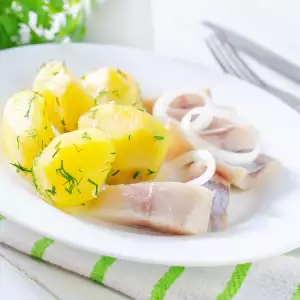
In a large portion of Swedish households, herring is served as a main course, while you can't go wrong with its use as a garnish either. The number of recipes for herring preparation truly are endless - in wine sauce, with onions, mustard, sugar beets and blackcurrant.
In northern Sweden and the Swedish part of Lapland, fermented Baltic herring is highly popular. It has a strong smell, which is why they prepare it outdoors, usually in the month of August. Generally it is sold in cans.
Preparation is as follows: the salted herring is placed in a barrel to sit in for about 2 months, after which it is transferred into cans, where the fermentation process continues. It sits that way 6 to 12 months and is then taken to stores.
A fun fact - fermented Baltic herring is so ingrained into Swedish culture that it has its own museum on the island of Skeppsholmen. Visitors there can learn a lot about the history of herring and the different techniques for its preparation.
Herring has fatty and tasty meat, which can be eaten fresh, salted, smoked or canned. Herring can be cooked in a saucepan or grill, baked in foil with vegetables, marinated in raw form, dried and added to salad or other dishes, boiled into a soup, steamed.
Below is a terrifically appetizing recipe for grilled herring with basil.
Ingredients: several herring fillets, 1 bunch of basil, 1 lemon, 1 tsp honey, 4 tablespoons olive oil and 2 tablespoons whole-grain mustard.
Preparation: Heat up the grill on high. Pour olive oil over the fillets and grilled them 5 to 6 min. To make a dressing, beat the honey, mustard, lemon rind and lemon juice together and add the remaining olive oil. Once the fish is ready, pour the dressing on top.
Of course we simply must note that herring is the main component of the world famous Russian pickled herring fillet (seledka). This is a traditional Russian dish, prepared in different ways.
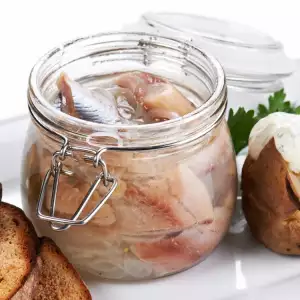
Ingredients: 17.5 oz herring fillets, 1 lemon, 2 bay leaves, 1 cup vinegar, 1 teaspoon sugar, 1 teaspoon salt, 5 grains of black pepper. Other spices that can be added according to taste include dill, coriander, a little curry, mustard and cloves.
Preparation: Put the spices and juice of half a lemon in 2 cups of hot water and let the marinade comes to a boil, then let it cool at room temperature. Arrange the herring fillets in a suitable container and pour the cooled marinade over them. Let the fish sit this way for 24 hours outside of the refrigerator. Then put it in the refrigerator, adding the lemon, cut into thin slices.
It is best to eat seledka on the 3rd day, served with vodka or made into a salad. Seledka makes a nice blini garnish but it can be served simply with butter and mustard sandwiches. Serve it decorated with grated cheese or boiled eggs too.
Benefits of Herring
Herring is an exceptionally healthy food. It is easily absorbed by the body and is a fine source of precious protein, iodine, calcium, phosphorus, potassium, zinc, magnesium, sodium, fluorine. Herring meat contains about 25% fat, 20% protein, vitamins D, РР, А and В12. The proteins of herring also contain essential amino acids.
Certain studies have shown that herring has the ability to relieve symptoms of psoriasis, to improve vision and brain functions. The fish oil has been proven to be 5 times more effective than vegetable oils.
Herring boosts the amount of so-called good cholesterol in the body. Herring oil reduces the size of fat cells, which in turn lowers the risk of the development of type II diabetes.
A different study has shown that herring is the healthiest food for winter, containing healthy fatty acids and improving vital body functions throughout the cold winter months.
Regular consumption of herring not only reduces bad cholesterol but also fortifies blood vessel walls. Consequently, this means a significantly reduced risk of cardiovascular diseases and atherosclerosis. Experts have stated that it is herring meat that can perfectly substitute some of the most expensive fish, such as salmon.
Regular consumption of fresh, lightly salted herring improves gallbladder, liver and pancreatic function. Herring is very important for the normal production of sex hormones.
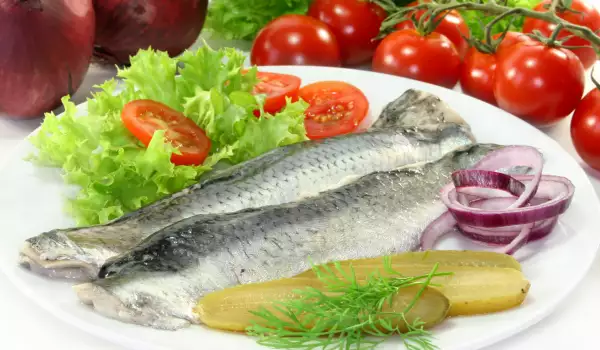

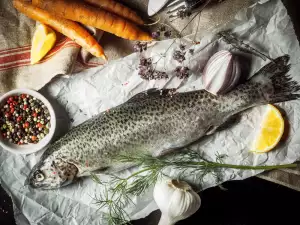
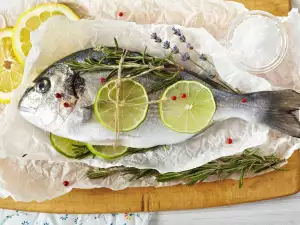




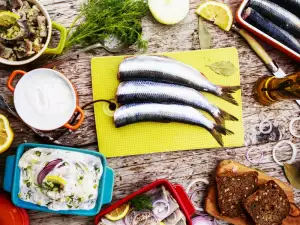
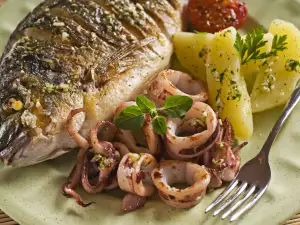
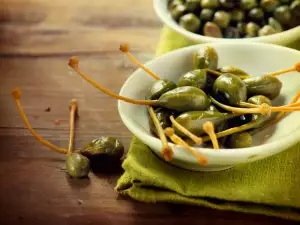
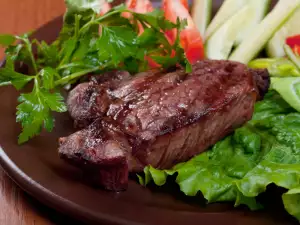



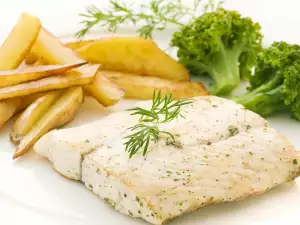




Comments